
When the mercury climbs, your chickens have to endure the heat, too. And extreme temperatures can lead to a host of health issues. But you can take some easy steps to keep your flock cool and safe during hot weather. That is unless you’re willing to let them inside to enjoy the air conditioning with you.
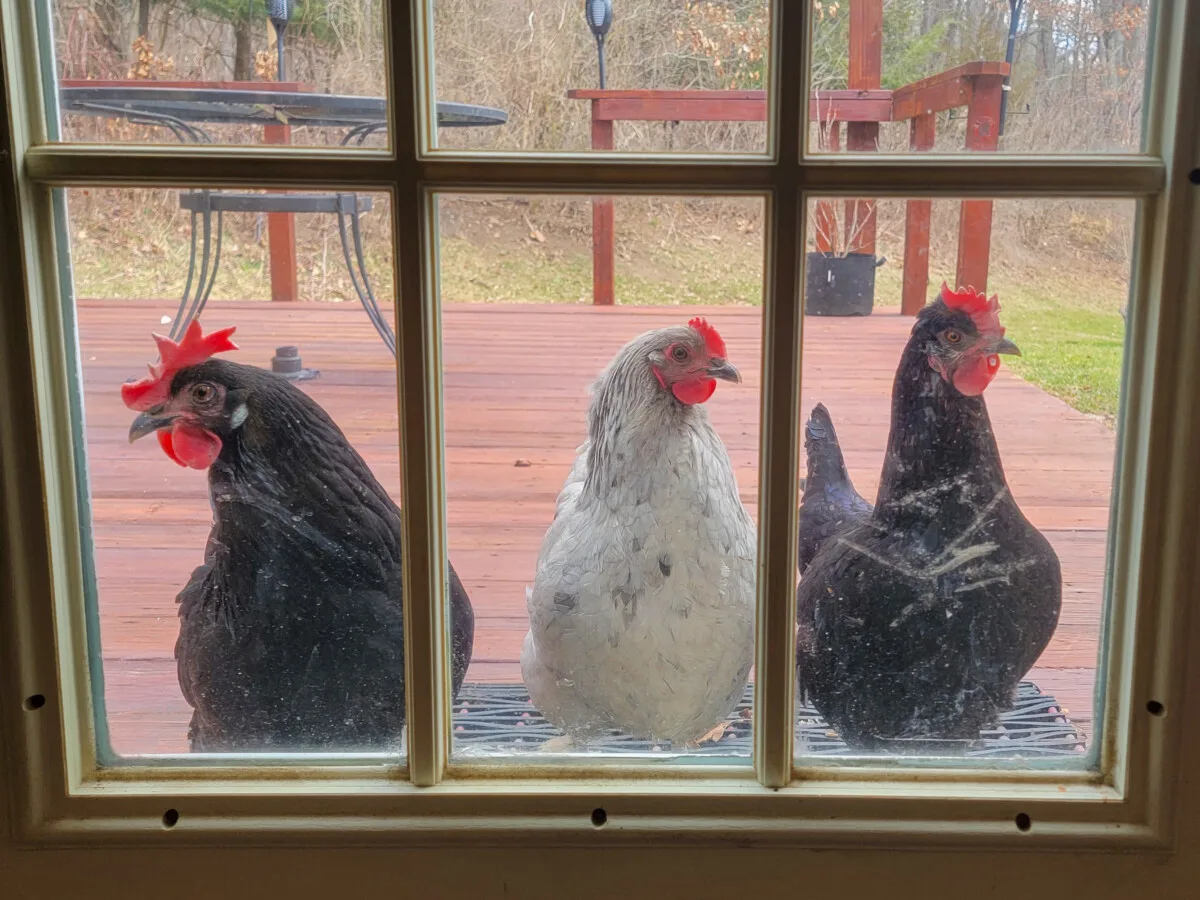
Heat Safety for Your Flock
Like us, all chickens can be affected by extreme heat and suffer from heat stress. However, some breeds are more susceptible than others to high temperatures, so keep this in mind when choosing breeds.
If not provided the means to cool themselves down, chickens can become heat stressed, leading to fewer eggs, dehydration, and even death if not caught in time. Taking care of your birds’ needs during the hottest months of the year ensures happy and healthy chickens and a steady supply of eggs.
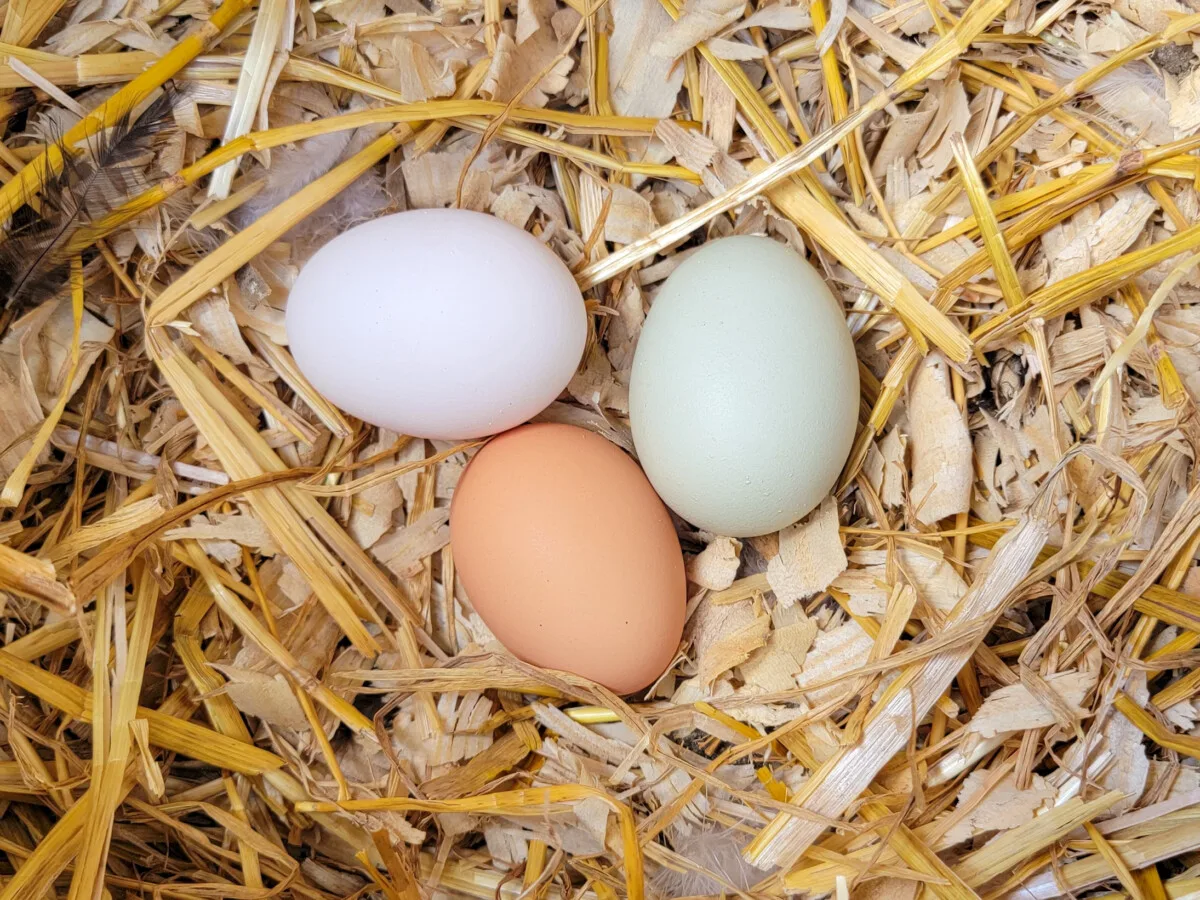
1. Make Sure Your Chickens Have Access to Shade
Ensure that your chickens have access to plenty of shade throughout the day. Whether in their run or out free-ranging, chickens need shade where they can retreat during the hottest part of the day.
We try to free-range our girls as much as possible during the summer, as it’s easier for them to find shade on their own under various trees and shrubs around the yard. That’s not always an option for every chicken keeper.
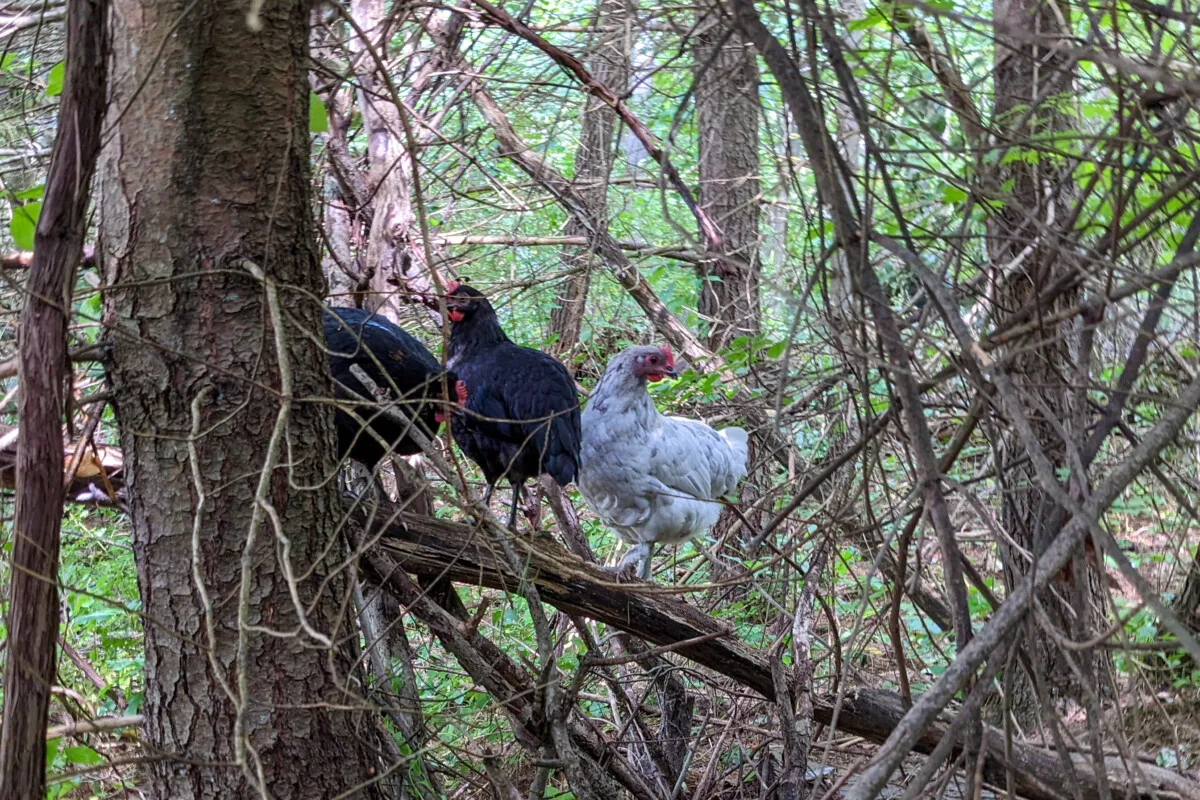
Cover all or a portion of the roof of their run during the summer, even if it’s with something as simple as a tarp. Enclosing the area beneath the chicken coop and making it a part of the run is a great way to create a shady spot where your chickens can hang out.
2. Make Sure the Coop is Properly Ventilated
Adequate ventilation in chicken coops and shelters is crucial to good poultry health overall, and it’s especially important in the summer when trying to keep chickens cool. Ensure your coop has good airflow to help dissipate heat and maintain a more comfortable temperature for your birds.
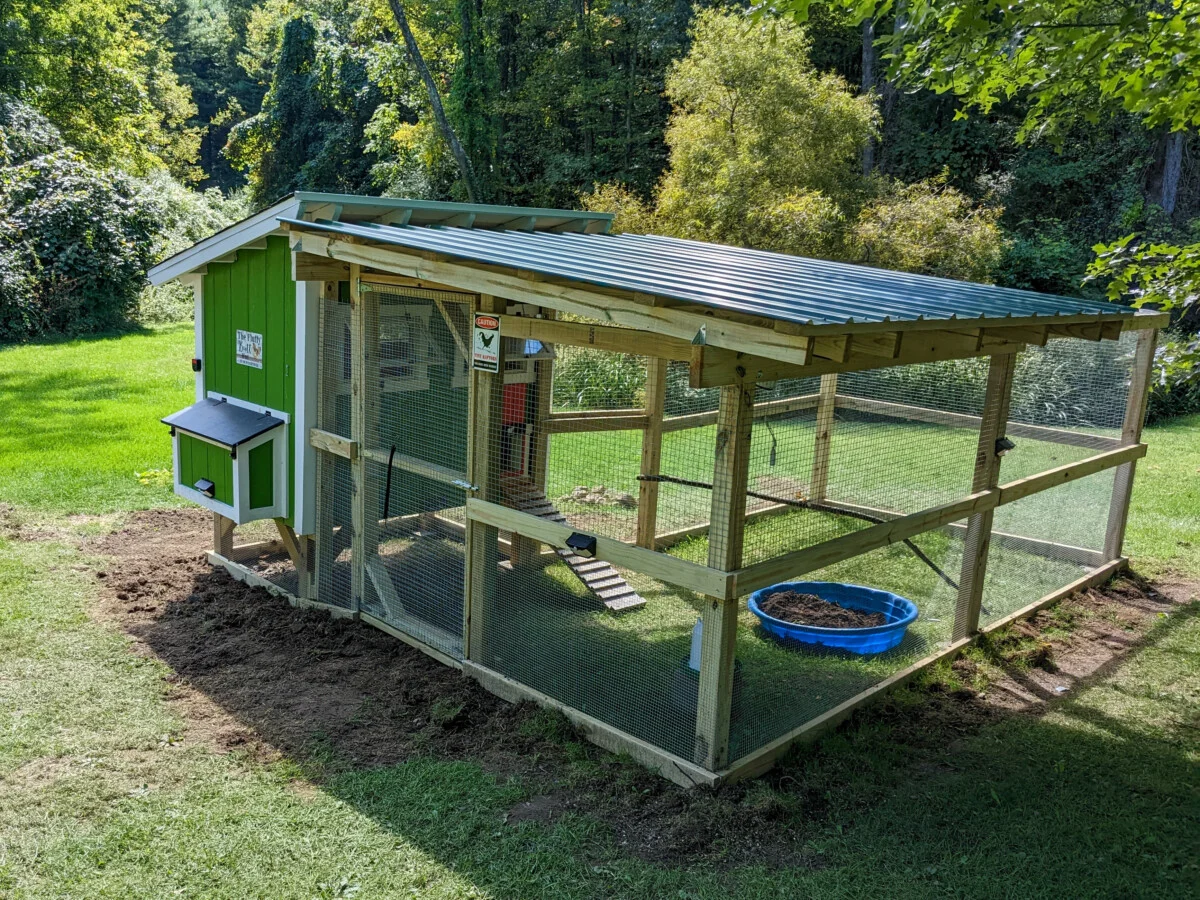
We also chose to cover most of the run to cut down on mud and provide shade.
You can add vents at the top of the coop to improve airflow if needed. Be sure to cover any openings with hardware cloth to prevent predators from getting in.
If you live somewhere especially hot, consider using fans or opening coop windows for the summer (properly covered with hardware cloth).
3. Always Provide Fresh, Clean Water
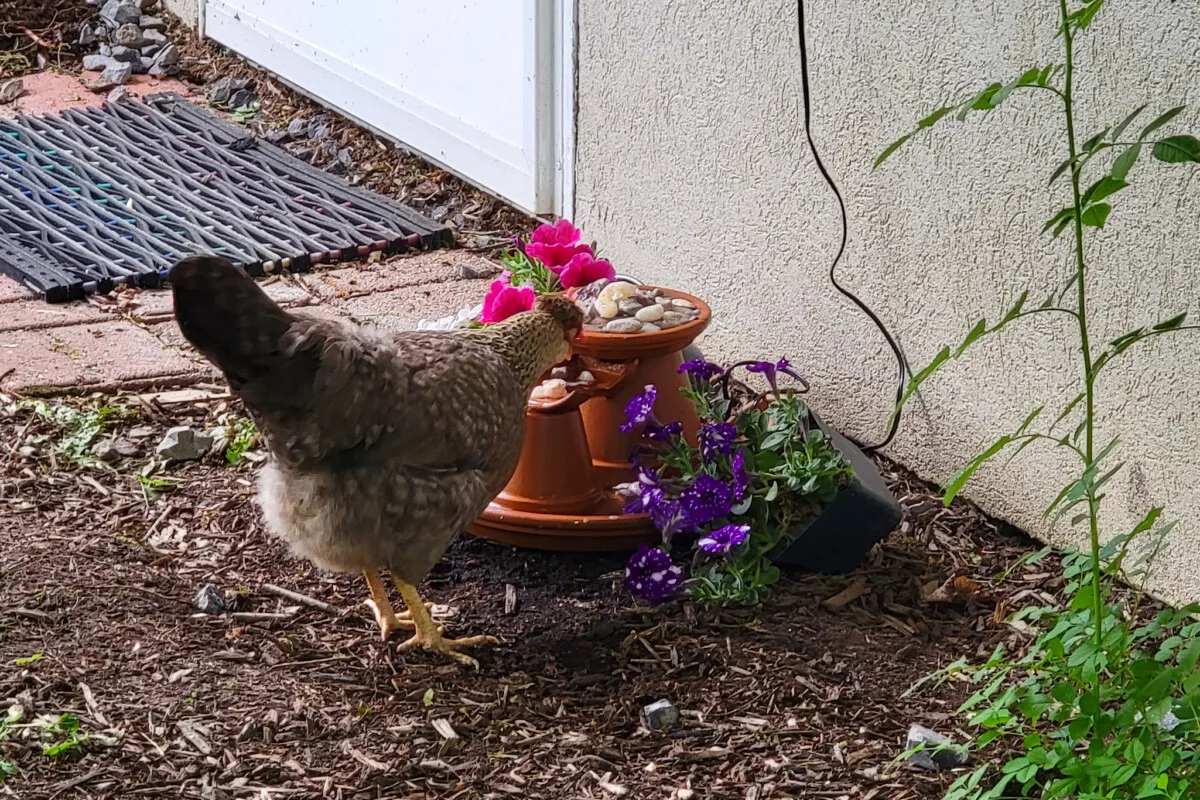
You should be providing this no matter what time of year it is, but water is even more important in the summer. You’ll need to check and change the water more frequently as your chickens will be drinking more and hot weather means things can grow faster in stagnant water. Yuck.
Toss in some ice to give your girls a cool, refreshing treat. They’ll certainly appreciate it.
4. Mist or Wet Down the Outside of the Coop
Spraying water on the roof of the chicken coop can help to bring down the temperature inside. Avoid spraying the run, as you’ll only create a muddy mess and deprive chickens of one of the ways they cool themselves – dust baths.
You also don’t want to spray or mist your chickens.
Chickens regulate their body heat by fluffing up their feathers to move air around their bodies. If they’re wet, they can’t do that. There’s a reason the saying is, “madder than a wet hen.”
5. Give Your Chickens a Wading Pool
While misting your chickens isn’t a good idea, giving them a shallow pool of water is. Chickens can stand in the water to cool their feet and sip water or dunk their heads to cool their combs. Provide a small container of water, only a couple of inches deep. You’ll want to change the water daily to avoid a mess and discourage mosquitoes from laying eggs.
6. Provide a Dust Bath
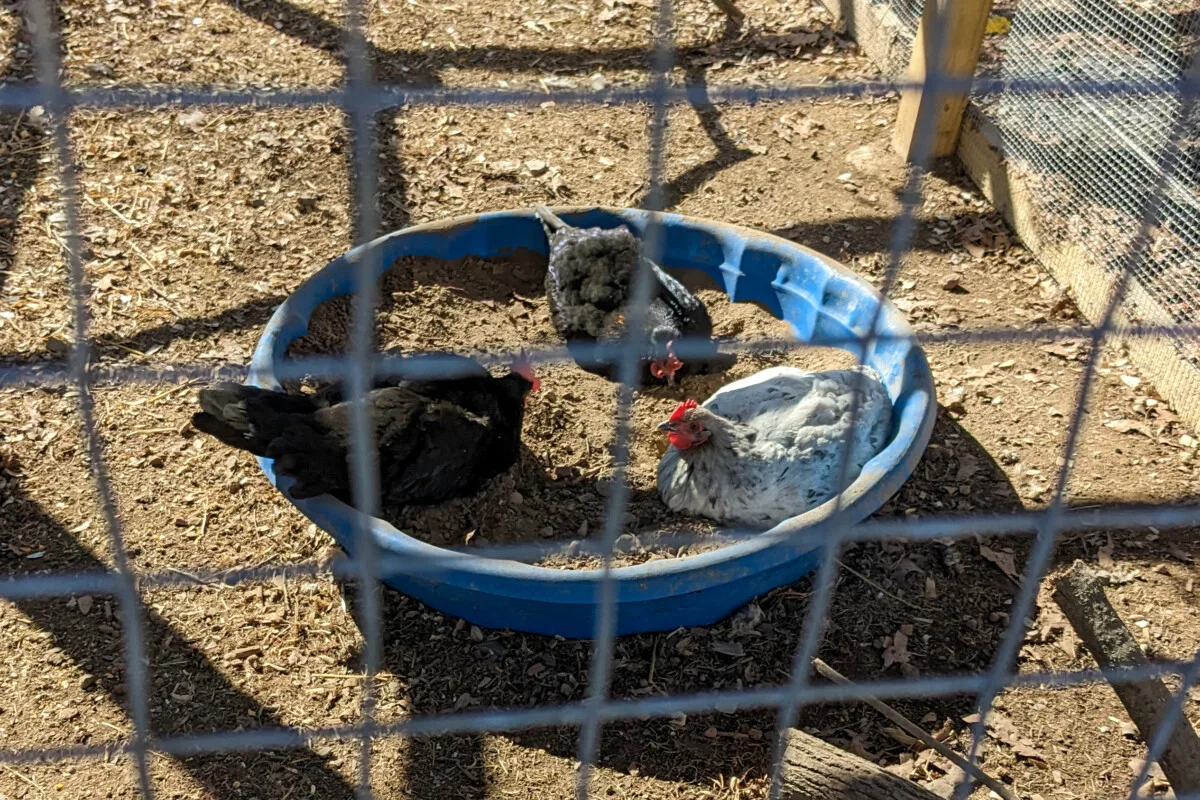
If you don’t already have one in the chicken run, set up a dust bath in a kiddie pool or other shallow container. Fill it with dry dirt, and then stand back. Your girls will love it. You can also add lime to the dust bath to help with parasites, such as mites, which can be especially problematic in the summer.
During hot weather, our chickens spend most of their day in a dust bath, whether it’s the one in the run or the ones they make under all our bushes and shrubs.
Related Reading: How To Easily Make A Chicken Dust Bath
7. Don’t Harass Your Flock
It’s hot out. You certainly wouldn’t want to be chased around the yard or carted around tucked under someone’s arm in this heat, nor do your chickens. Unless necessary for their health or safety, try to let your chickens be during hot weather.
8. Provide Cool and Frozen Treats
Give your chickens fruit and veggies with high water content to keep them hydrated. Freeze these treats first for some seriously happy chickens. Some of our girls’ favorites are watermelon, cucumber and blueberries.
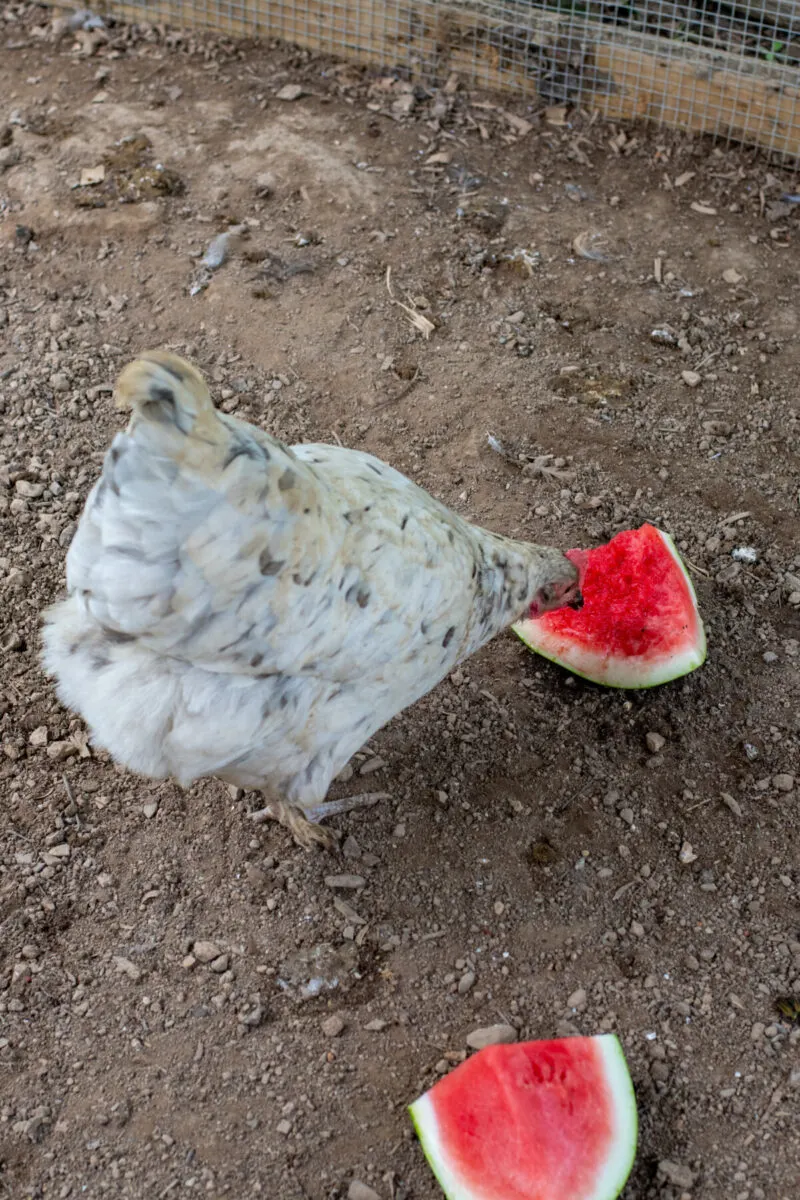
We buy a watermelon and slice it into rounds or quarters, then separate each layer with wax paper before placing the whole thing in the freezer. We take out a slice at a time of frozen watermelon to give to them.
Remember to introduce treats gradually and in moderation. Too many treats can upset the balance of their regular diet, which should primarily consist of a quality chicken feed.
9. Cold Scrambled Eggs
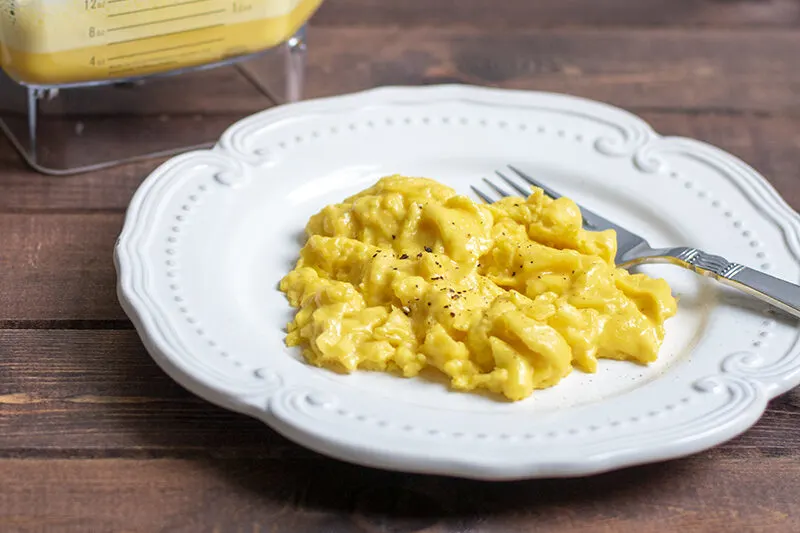
Egg laying and the heat can sap your hens of vital nutrients. Feed your chickens cold scrambled eggs. No, this won’t cause your hens to start pecking and eating the eggs they lay. Feeding them back the eggs they lay can help replace lost nutrients, which can take a toll during hot weather.
10. Avoid Cracked Corn and Scratch Grains
Don’t feed dry corn or scratch grains in the summer, as these treats cause the bird’s body to heat up while digesting them. Save these treats for cold weather when extra heat can help.
Chicken Health in Hot Weather
Keep an eye on your chickens for signs of heat exhaustion. During especially hot weather, it’s normal for your chickens to be less active and eat less. But some signs, such as heavy panting, wings drooping or stretched out with erect feathers, diarrhea, or a drop in egg production, can point to heat stress.
If these behaviors are seen, you need to quickly cool your bird down. In extreme cases, you should contact your local avian vet.
Hot weather can also make pest and parasite problems worse.
Be sure you clean the coop and nest boxes regularly during hot periods to prevent infestations.
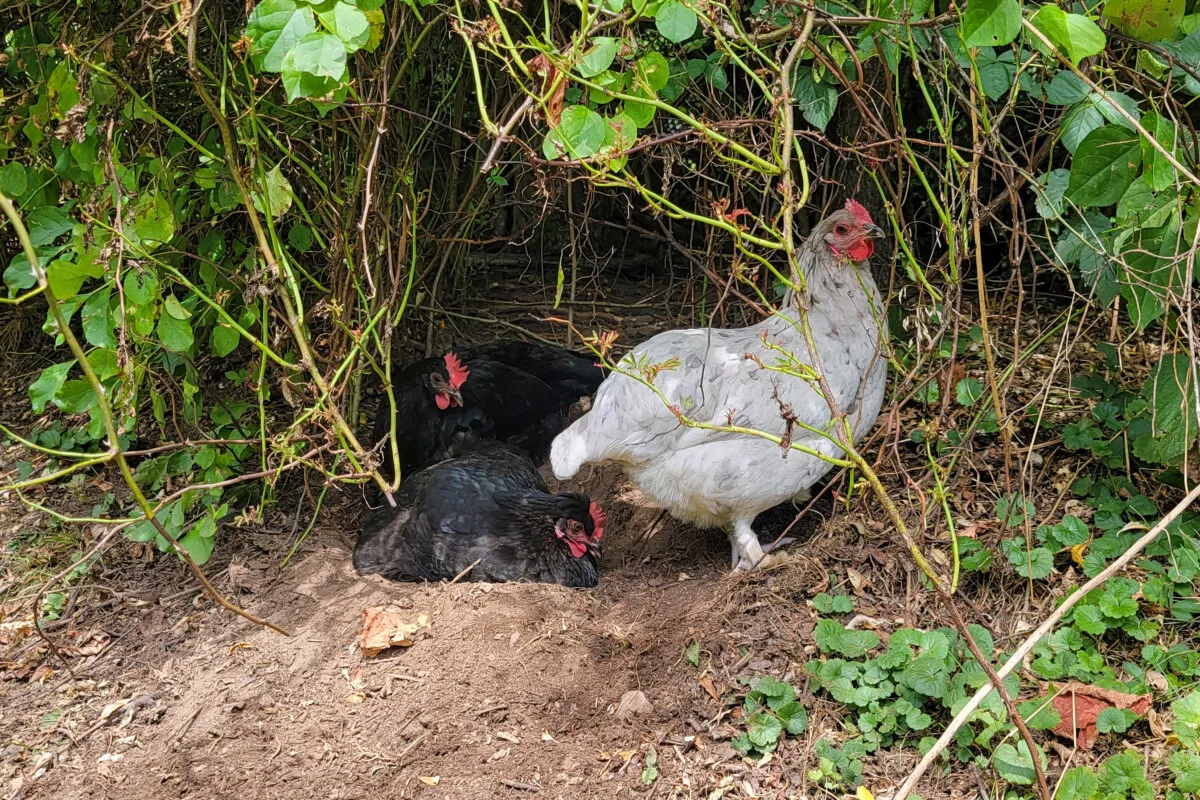
By following these tips, you’ll help your chickens stay cool, comfortable and healthy during the dog days of summer.

Get the famous Rural Sprout newsletter delivered to your inbox.
Including Sunday musings from our editor, Tracey, as well as “What’s Up Wednesday” our roundup of what’s in season and new article updates and alerts.

